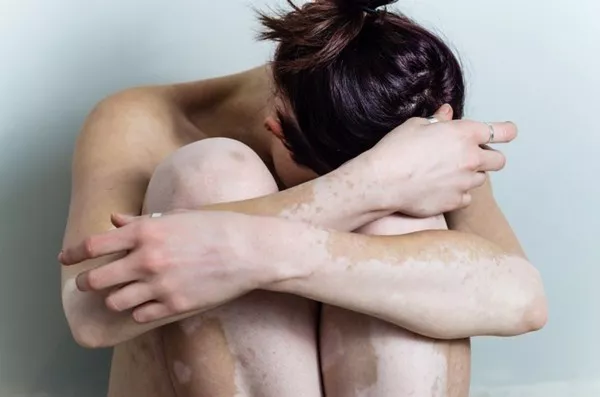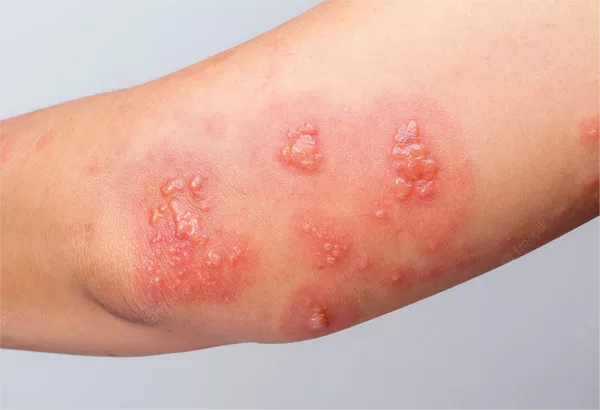Vitiligo is a chronic skin condition characterized by the loss of pigment, resulting in white patches on various parts of the body. These patches occur due to the destruction or malfunction of melanocytes, the cells responsible for producing melanin, the pigment that gives skin its color. Understanding whether vitiligo is healing can be challenging, as the process is gradual and varies significantly among individuals. This article delves into the signs of healing in vitiligo, treatment options, and lifestyle changes that can support the healing process.
Understanding Vitiligo
Before discussing the signs of healing, it’s crucial to have a clear understanding of what vitiligo is and its various forms.
Types of Vitiligo
1. Non-Segmental Vitiligo (NSV): This is the most common form of vitiligo, affecting both sides of the body symmetrically. It often starts with rapid pigment loss and then stabilizes, with phases of activity and dormancy.
2. Segmental Vitiligo (SV): This type is less common and affects one side of the body or one particular area. It usually progresses for a year or two and then stops.
Causes and Risk Factors
Vitiligo is believed to be an autoimmune condition, where the body’s immune system mistakenly attacks melanocytes. Genetic predisposition, environmental factors, and oxidative stress are also considered contributors. People with a family history of vitiligo or other autoimmune diseases are at a higher risk.
Signs of Vitiligo Healing
Healing in vitiligo is often a gradual process, marked by several key signs. It’s important to note that complete repigmentation is rare, but partial recovery is achievable.
1. Appearance of Pigment Spots
One of the primary signs of vitiligo healing is the appearance of small, tan, or brown spots within the white patches. These spots are known as “pigment islands” and indicate the return of melanocytes or their increased activity. Over time, these spots may merge, leading to larger areas of repigmented skin.
2. Marginal Repigmentation
Repigmentation often starts at the edges of the vitiligo patches, moving inward. This is known as marginal repigmentation. You may notice a gradual darkening at the borders of the white patches, which then extends toward the center. This process can be slow, but consistent darkening over weeks or months is a positive sign.
3. Freckling
Freckling is another indicator of healing. Small, dark freckles may appear within the depigmented areas. These freckles result from the activation of dormant melanocytes or the migration of new melanocytes into the affected skin.
4. Reduction in Patch Size
A decrease in the size of the white patches is a significant sign of healing. As repigmentation occurs, the white patches shrink, and the normal skin color gradually returns. This reduction can be monitored by taking regular photographs of the affected areas.
5. Improvement in Skin Texture
Healing vitiligo can also lead to an improvement in skin texture. The depigmented areas often have a different texture than the surrounding skin. As melanocytes return and produce melanin, the texture becomes more uniform, similar to the unaffected skin.
Treatments That Promote Healing
While there’s no cure for vitiligo, various treatments can help promote repigmentation and slow the progression of the disease. Combining medical treatments with lifestyle changes can enhance the healing process.
1. Topical Corticosteroids
Topical corticosteroids are often prescribed to reduce inflammation and promote repigmentation. They are most effective in the early stages of vitiligo and can be used on small areas of the body. However, long-term use can lead to side effects, such as skin thinning.
2. Calcineurin Inhibitors
Calcineurin inhibitors, such as tacrolimus and pimecrolimus, are non-steroidal medications that can be applied to the skin. They work by suppressing the immune response, reducing inflammation, and encouraging repigmentation. These are particularly useful for sensitive areas like the face and neck.
3. Phototherapy
Phototherapy involves exposing the skin to ultraviolet (UV) light under medical supervision. Narrowband UVB therapy is the most commonly used form of phototherapy for vitiligo. It helps stimulate melanocyte activity and promote repigmentation. Treatment typically involves multiple sessions per week over several months.
4. Excimer Laser
The excimer laser is a targeted form of phototherapy that delivers high-intensity UVB light to small areas of vitiligo. It is particularly effective for localized patches and can lead to faster repigmentation compared to traditional phototherapy.
SEE ALSO: What Skin Disease Looks Like Vitiligo
5. Skin Grafting
In cases where vitiligo is stable and affects small areas, skin grafting may be an option. This involves transplanting healthy skin from one part of the body to the depigmented areas. The transplanted skin contains active melanocytes that can repopulate the affected skin.
6. Depigmentation
For extensive vitiligo where repigmentation is not feasible, depigmentation therapy may be considered. This involves using medications like monobenzone to lighten the remaining pigmented skin, creating a more uniform appearance.
Lifestyle Changes to Support Healing
In addition to medical treatments, certain lifestyle changes can support the healing process and improve overall skin health.
1. Healthy Diet
A diet rich in antioxidants, vitamins, and minerals can help reduce oxidative stress and support melanocyte health. Foods high in vitamin C, vitamin E, zinc, and beta-carotene are particularly beneficial. Incorporating fruits, vegetables, nuts, seeds, and lean proteins can provide the necessary nutrients for skin health.
2. Stress Management
Stress is a known trigger for vitiligo and can exacerbate the condition. Practicing stress management techniques such as meditation, yoga, deep breathing exercises, and regular physical activity can help reduce stress levels and support the healing process.
3. Sun Protection
Protecting the skin from excessive sun exposure is crucial for individuals with vitiligo. While moderate sun exposure can stimulate melanocyte activity, excessive UV radiation can damage the skin and worsen vitiligo. Using broad-spectrum sunscreen with a high SPF, wearing protective clothing, and seeking shade during peak sun hours are essential practices.
4. Avoiding Skin Trauma
Skin trauma, such as cuts, burns, or friction, can trigger new vitiligo patches. Taking precautions to avoid skin injuries and using gentle skincare products can help prevent the spread of vitiligo.
5. Regular Monitoring
Regularly monitoring the affected areas and documenting any changes can help track the progress of healing. Taking photographs and keeping a journal of treatments and lifestyle changes can provide valuable insights into what works best for your condition.
Psychological Support and Coping Strategies
Living with vitiligo can be challenging, both physically and emotionally. Seeking psychological support and adopting coping strategies can improve mental well-being and enhance the healing process.
1. Support Groups
Joining support groups or connecting with others who have vitiligo can provide a sense of community and understanding. Sharing experiences, tips, and coping strategies can be empowering and reduce feelings of isolation.
2. Counseling
Professional counseling or therapy can help individuals cope with the emotional impact of vitiligo. Cognitive-behavioral therapy (CBT) and other therapeutic approaches can address issues related to self-esteem, anxiety, and depression.
3. Positive Self-Image
Fostering a positive self-image and practicing self-acceptance are crucial for mental well-being. Embracing vitiligo as part of one’s unique identity and focusing on strengths and achievements can improve self-esteem and overall happiness.
Conclusion
While vitiligo is a complex and often unpredictable condition, signs of healing are possible with the right combination of treatments, lifestyle changes, and psychological support. The appearance of pigment spots, marginal repigmentation, freckling, reduction in patch size, and improvement in skin texture are all indicators of healing. Medical treatments such as topical corticosteroids, calcineurin inhibitors, phototherapy, excimer laser, and skin grafting can promote repigmentation. Additionally, a healthy diet, stress management, sun protection, avoiding skin trauma, and regular monitoring can support the healing process. Psychological support and coping strategies are also essential for improving mental well-being and enhancing the overall quality of life for individuals with vitiligo. Remember, each person’s journey with vitiligo is unique, and patience and persistence are key in managing and healing this condition.
Related Topics:



























